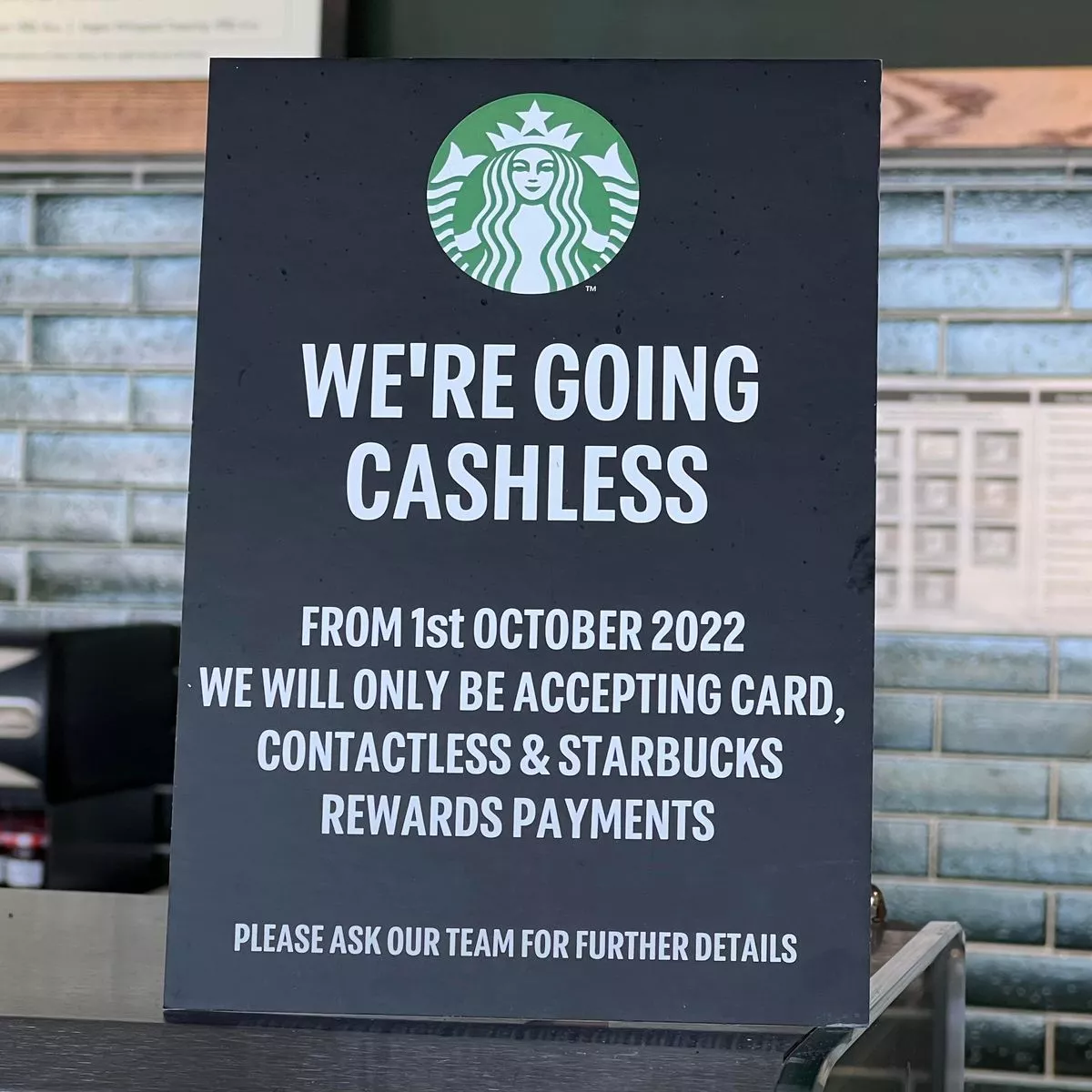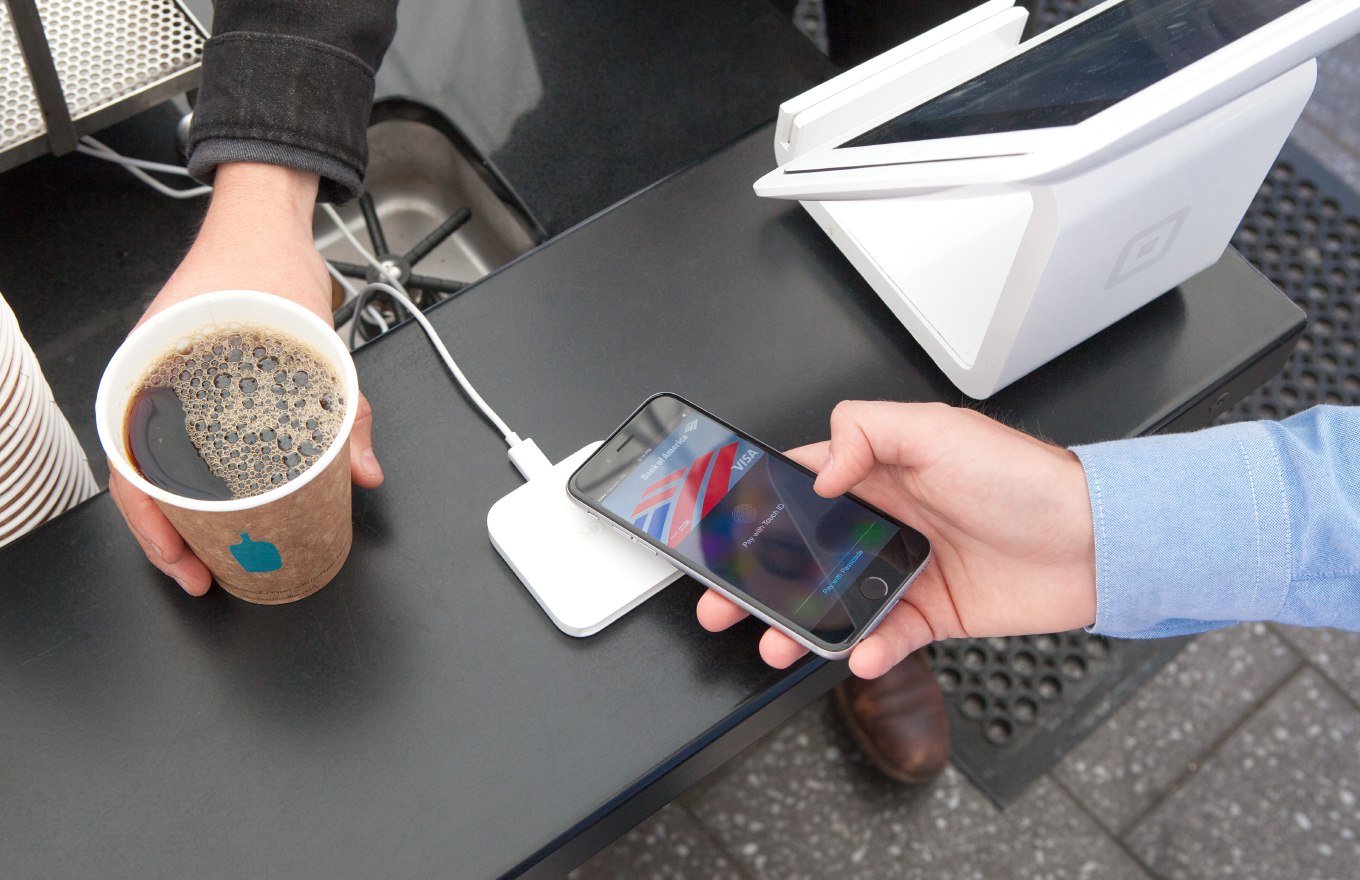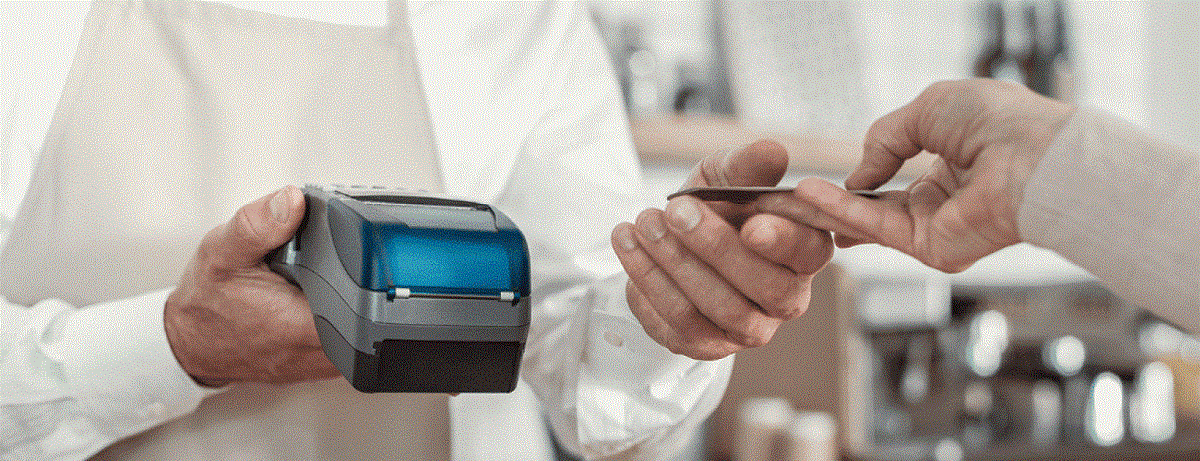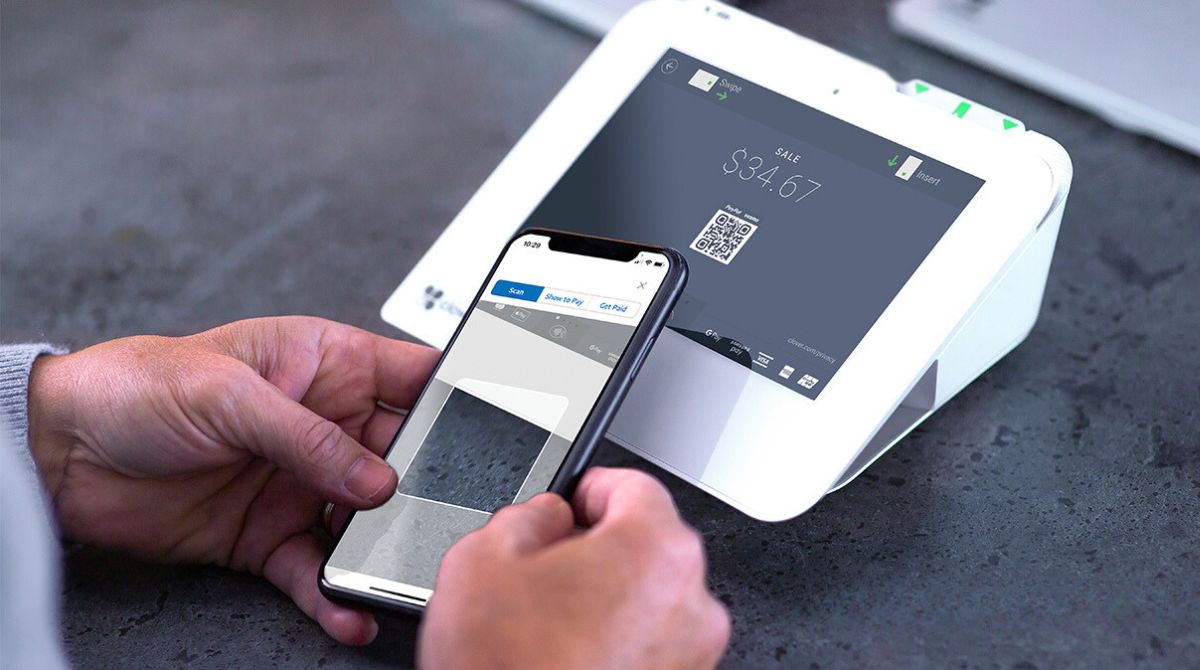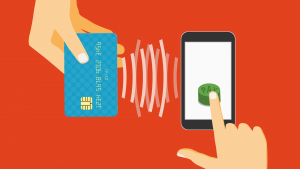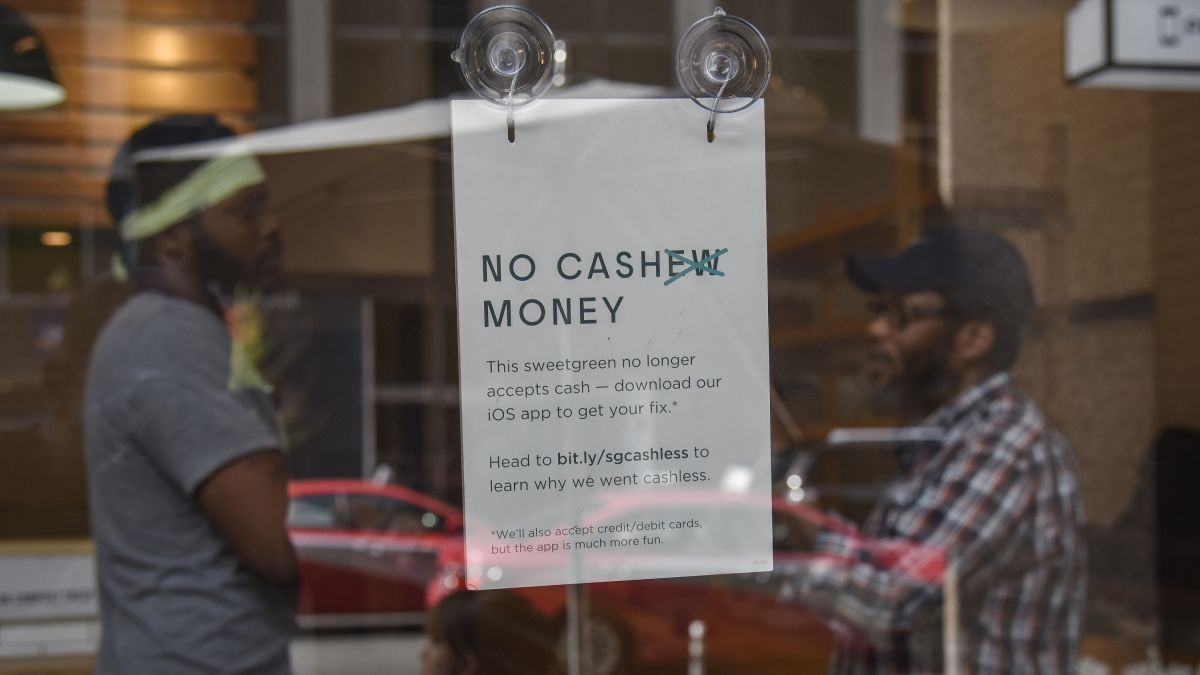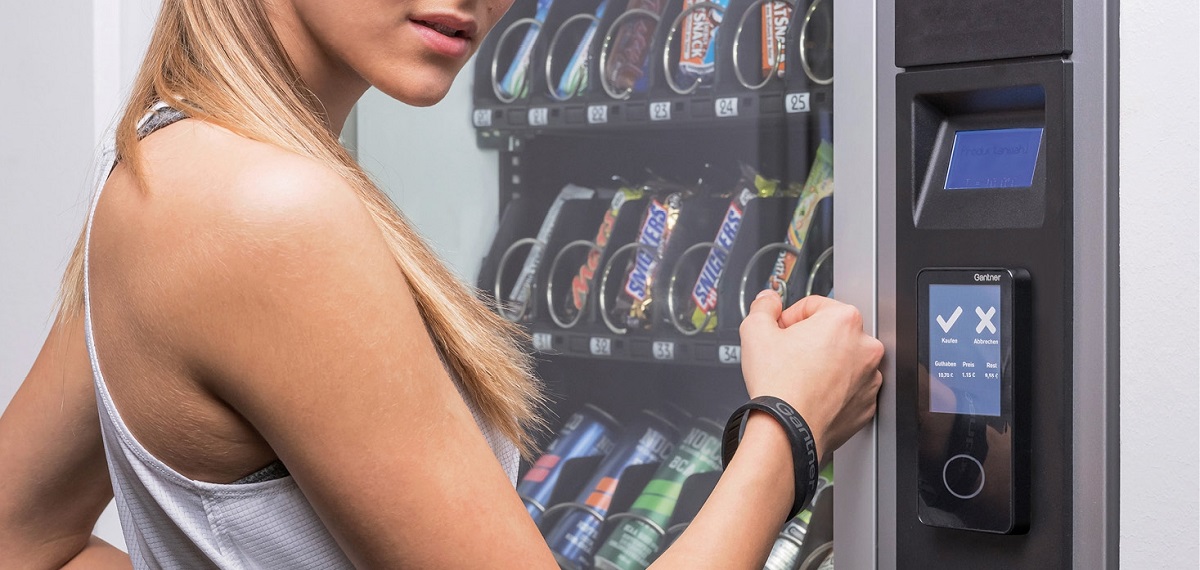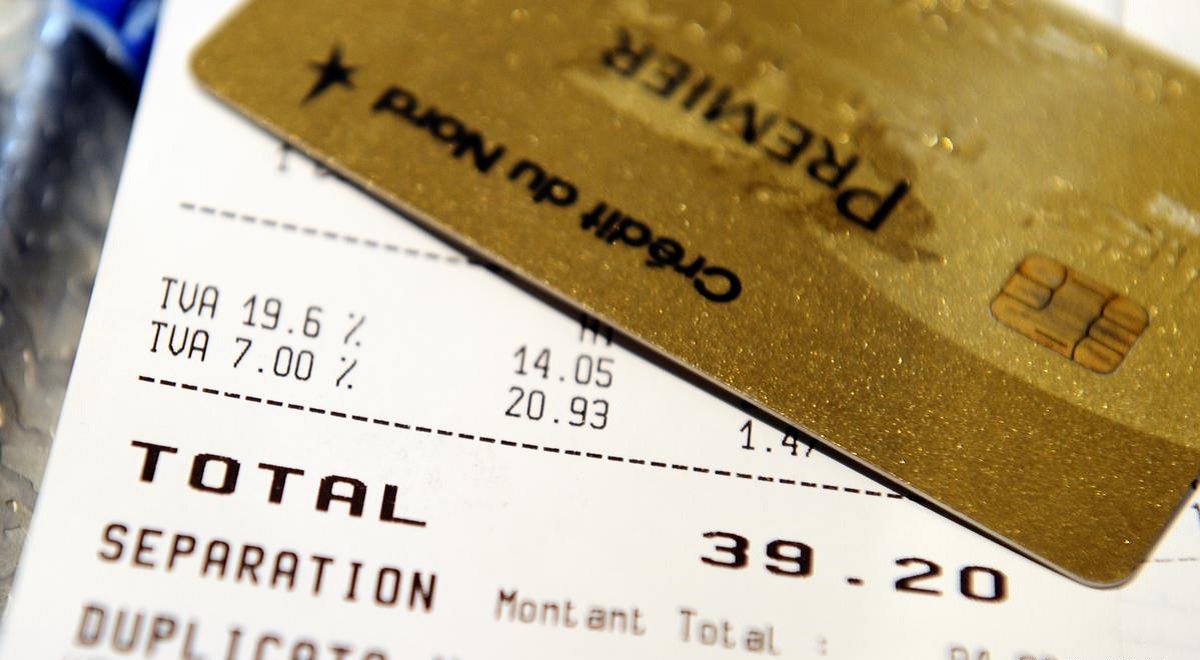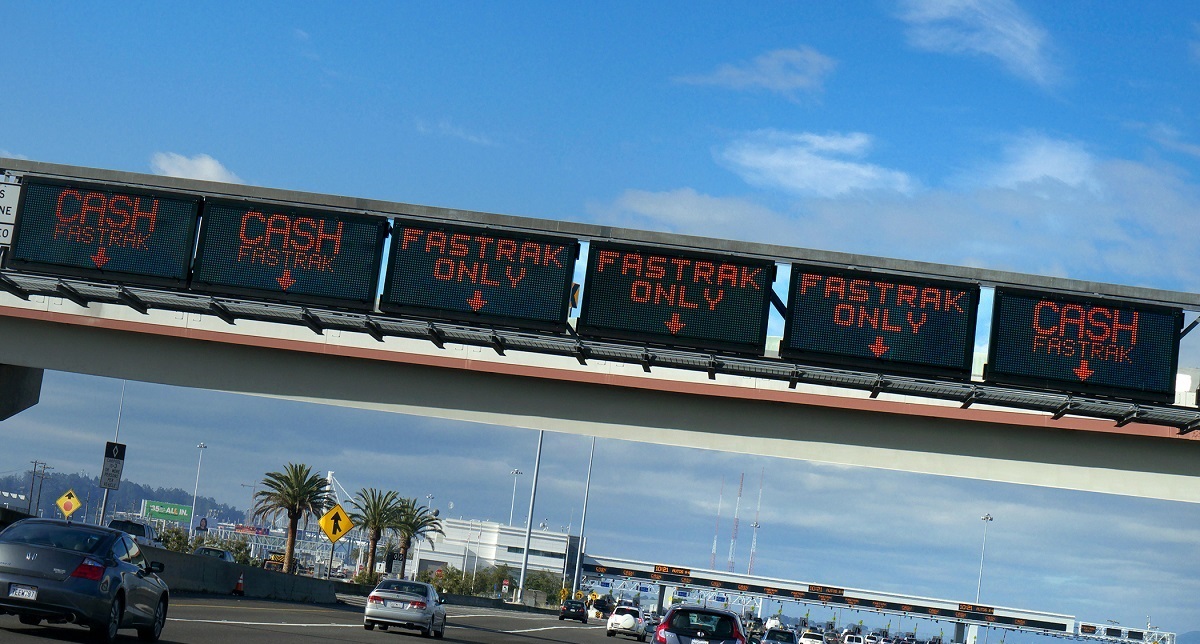Introduction
In today’s fast-paced digital world, technology has revolutionized almost every aspect of our lives, including the way we make payments. Traditional cash transactions are gradually being replaced by digital payment methods, such as credit cards, mobile wallets, and online transfers. One prominent brand that has recently made headlines for their move towards a cashless society is Starbucks.
Starbucks, the world-renowned coffeehouse chain, has been at the forefront of innovation in the retail industry for years. With a commitment to providing exceptional customer experiences, they have continuously embraced emerging technologies to enhance their operations. Going cashless is just one of the latest strategies Starbucks is implementing to revolutionize the way customers make payments.
But what exactly does it mean for Starbucks to go cashless? In simple terms, it means that Starbucks will no longer accept physical currency, such as cash or coins, as a form of payment. Instead, customers will be encouraged to pay using various digital payment options, such as their Starbucks mobile app, credit cards, or other contactless payment methods.
Going cashless offers numerous advantages for Starbucks, including increased efficiency, streamlined operations, enhanced customer experience, and positioning themselves as a leader in the digital future. However, it also poses potential challenges and concerns. In this article, we will delve deeper into the reasons behind Starbucks’ decision to go cashless, the benefits they hope to achieve, and the potential pitfalls they must navigate.
So, grab your favorite beverage and read on to explore why Starbucks is making the bold move towards a cashless future.
What does it mean to go cashless?
Going cashless refers to the practice of conducting financial transactions without using physical currency. In the context of Starbucks, it means that customers will no longer be able to pay for their purchases using cash or coins. Instead, they will be encouraged to use digital payment methods.
There are various digital payment options available, including mobile payment apps, credit cards, debit cards, and contactless payment methods like Apple Pay and Google Pay. These options offer customers a convenient and efficient way to make purchases without the need for physical cash.
By going cashless, Starbucks aims to make the payment process quicker and more seamless for their customers. With electronic payments, customers can simply tap their phones or swipe their credit cards to complete their transactions, eliminating the need to fumble for cash or wait for change. This enables a faster and more efficient customer experience, particularly during busy periods when time is of the essence.
Furthermore, going cashless aligns with the digital transformation that is happening across various industries. As more consumers embrace digital payment methods, businesses must adapt to meet these changing preferences. By transitioning to a cashless model, Starbucks is staying ahead of the curve and catering to the evolving needs of their customers.
It’s important to note that going cashless doesn’t mean completely eliminating the option to pay with cash. While Starbucks may no longer accept cash as a form of payment, they will still offer alternative methods to accommodate customers who prefer or only have access to cash. For example, customers can use the Starbucks mobile app to load cash onto a digital account and then pay using their app.
Overall, going cashless signifies Starbucks’ commitment to embracing technology and adapting to the digital era. By providing customers with diverse payment options, Starbucks is enhancing the convenience and efficiency of the purchasing process, ultimately delivering an improved experience for all.
Advantages of going cashless for Starbucks
Transitioning to a cashless system offers several significant advantages for Starbucks. As one of the world’s largest coffeehouse chains, embracing digital payments can enhance operational efficiency, improve the customer experience, and position Starbucks at the forefront of the evolving retail landscape.
Firstly, going cashless allows Starbucks to increase efficiency through digital payments. With cash transactions, employees often spend significant time processing and handling money, ensuring accurate change and securing funds. By eliminating cash, employees can focus more on serving customers, reducing transaction time and increasing overall productivity. The streamlined payment process enables quicker turnovers and shorter wait times, ultimately enhancing the customer experience.
Secondly, implementing a cashless system can help Starbucks streamline operations and reduce overhead costs. Handling cash comes with expenses such as cash handling fees, security measures, and the need for cash registers or safes. By eliminating cash, Starbucks can see a reduction in these costs, which can be allocated towards other strategic initiatives such as innovation, employee training, or improving store aesthetics.
Furthermore, going cashless offers an enhanced customer experience and convenience. Many consumers prefer the ease and speed of digital payments, as it eliminates the need to carry physical cash. With options like the Starbucks mobile app, customers can quickly order and pay in advance, avoiding long queues and minimizing wait times. Additionally, digital payment methods offer loyalty programs and personalized rewards that can further incentivize customer loyalty.
By embracing a cashless model, Starbucks is also positioning itself as a forward-thinking brand that embraces the digital future. In an increasingly technology-driven society, businesses that adapt and integrate digital solutions demonstrate their commitment to progress and innovation. Going cashless allows Starbucks to align with the expectations of tech-savvy consumers who seek seamless and convenient experiences.
While there are numerous advantages to going cashless, it is important for Starbucks to address potential challenges and concerns to ensure inclusivity and maintain customer satisfaction. The next section will explore some of these challenges and how Starbucks can overcome them.
Increased efficiency through digital payments
One of the significant advantages of going cashless for Starbucks is the increased efficiency that digital payments bring to their operations. By eliminating the need for cash transactions, Starbucks can streamline their processes and improve their overall efficiency.
With traditional cash transactions, there are several time-consuming steps involved. Cashiers need to manually count and verify cash, provide change, and reconcile cash registers at the end of their shifts. These tasks can be a drain on both time and resources, especially during peak business hours when efficiency is crucial.
By embracing digital payments, Starbucks can significantly reduce the time it takes for each transaction. Customers can simply tap or swipe their payment method, and the transaction is processed instantly, without the need for counting cash or providing change. This eliminates potential bottlenecks in the payment process, leading to shorter wait times and a more efficient customer experience.
Additionally, digital payments allow for seamless integration with other systems, such as loyalty programs and mobile ordering. Starbucks’ mobile app allows customers to load funds onto a digital account, enabling quick and easy payments. This integration not only enhances the customer experience but also enables Starbucks to gather valuable data about customer preferences and purchasing behavior, which can inform their marketing and business strategies.
Furthermore, digital payments provide a higher level of accuracy and security compared to cash transactions. With cash, there is always a risk of human error, such as miscounting money or mishandling change. Digital payments eliminate these risks, ensuring that transactions are processed accurately and reducing the likelihood of errors.
From an operational standpoint, going cashless also simplifies tasks related to cash management. Since there is no physical cash to handle, employees do not need to spend time balancing cash registers or making trips to the bank for cash deposits. This can free up valuable employee time that can be redirected towards other tasks, such as providing exceptional customer service or preparing orders efficiently.
By embracing digital payments and the increased efficiency they bring, Starbucks can improve the overall speed and convenience of their service, enhancing the overall customer experience and boosting operational effectiveness.
Streamlined operations and reduced overhead
Transitioning to a cashless system offers Starbucks the opportunity to streamline their operations and reduce overhead costs. By eliminating the need to handle physical cash and the associated expenses, Starbucks can optimize their resources and allocate them more strategically.
Handling cash transactions comes with various costs, such as cash handling fees, security measures, and the need for cash registers or safes. These expenses can add up significantly, especially for a global brand like Starbucks with a vast network of stores. By going cashless, Starbucks can significantly reduce these costs and redirect the savings towards other areas of the business.
One significant area where going cashless can reduce overhead is through the elimination of cash handling fees. Banks and other financial institutions often charge fees for cash deposits and withdrawals. By conducting most transactions digitally, Starbucks can reduce their reliance on cash and minimize these fees, resulting in substantial cost savings over time.
Moreover, managing cash requires additional security measures to protect against theft or loss. This involves investing in secure cash handling procedures, such as installing surveillance cameras, employing security personnel, and implementing rigorous cash handling protocols. By removing the need for physical cash, Starbucks can reduce their security expenses and focus on ensuring a safe and secure environment in other aspects of their operations.
Another aspect of streamlined operations is the reduction in cash-related administrative tasks. Counting, sorting, and reconciling cash registers can be time-consuming and labor-intensive, especially during peak hours. By eliminating cash transactions, Starbucks can simplify their back-office operations and save valuable employee time, which can be redirected towards more customer-centric tasks, such as providing exceptional service or ensuring product quality.
Furthermore, going cashless enables a more accurate and efficient financial reporting process. With digital transactions, the data is automatically recorded and can be seamlessly integrated into existing systems. This eliminates the need for manual reconciliation and reduces the risk of errors or discrepancies. The availability of real-time transaction data also allows for better financial forecasting and analysis, facilitating more informed decision-making processes.
In summary, transitioning to a cashless system allows Starbucks to streamline their operations, reduce overhead costs, and improve overall efficiency. By eliminating the need for cash handling, Starbucks can optimize their resources, improve financial reporting accuracy, and allocate cost savings towards enhancing the customer experience and driving business growth.
Enhanced customer experience and convenience
One of the key advantages of going cashless for Starbucks is the enhanced customer experience and convenience it brings. By embracing digital payment methods, Starbucks can provide a seamless and efficient purchasing process, ultimately improving customer satisfaction and loyalty.
Firstly, digital payments offer customers a faster and more convenient way to complete their transactions. Instead of fumbling for cash or waiting for change, customers can simply tap their mobile phones or swipe their credit cards to make a payment. This streamlined process reduces transaction time and allows customers to get their orders quickly, particularly during busy periods where time is of the essence.
Additionally, the integration of digital payment methods, such as the Starbucks mobile app or contactless payments, facilitates a frictionless and personalized experience. Customers can conveniently store their payment information within the app, enabling them to make purchases with a single tap. The app also offers features like loyalty programs and personalized rewards, further incentivizing customer retention and engagement.
Moreover, digital payments provide customers with the flexibility to pay in a way that best suits their preferences. Whether it’s using a mobile wallet, credit card, or other digital payment options, customers have the freedom to choose the method that is most convenient and secure for them. This flexibility caters to the diverse needs and preferences of Starbucks’ customer base and enhances overall customer satisfaction.
Furthermore, the move towards a cashless system aligns with the evolving expectations of today’s tech-savvy consumers. In an era where convenience and efficiency are paramount, customers appreciate the ability to make payments digitally and seamlessly. By providing a frictionless payment experience, Starbucks can position themselves as a modern and customer-centric brand that understands and meets the needs of their target audience.
Going cashless also opens up possibilities for innovation and future enhancements in the customer experience. With ongoing advancements in technology, Starbucks can leverage digital payment platforms to introduce features like personalized recommendations, customized offers, and easy refill options. By leveraging customer data from digital payment transactions, Starbucks can tailor their offerings to individual preferences, delivering a more personalized and rewarding experience for their customers.
In summary, embracing digital payment methods allows Starbucks to enhance the customer experience and convenience. By providing a fast and seamless payment process, offering flexibility in payment options, and aligning with evolving consumer expectations, Starbucks can deliver a superior customer experience that fosters loyalty and drives business growth.
Embracing the digital future and staying ahead of competition
By going cashless, Starbucks is positioning itself as a forward-thinking brand that embraces the digital future. In an era where technology is rapidly evolving, and digital payments are becoming increasingly popular, staying ahead of the competition is crucial for long-term success.
Embracing digital payment methods allows Starbucks to demonstrate their commitment to innovation and adaptability. By offering convenient and efficient payment options, Starbucks can attract tech-savvy customers who prioritize seamless experiences and cutting-edge technology. This positions Starbucks as a leader in the industry and helps differentiate them from competitors who still rely solely on traditional cash transactions.
Furthermore, going cashless enables Starbucks to tap into the growing trend of mobile and contactless payments. With the rise of smartphones and the increasing adoption of digital wallets, customers are increasingly expecting businesses to accept these payment methods. By embracing digital payments, Starbucks can align with consumer preferences and meet their evolving expectations, enhancing their competitive edge in the market.
Moreover, going cashless fosters innovation and opens up new opportunities for Starbucks to enhance their customer offerings. With digital payments, Starbucks can leverage data analytics and customer insights to gain a deeper understanding of customer behavior and preferences. This information can be used to develop targeted promotional offers, personalized recommendations, and other tailored experiences that drive customer satisfaction and foster brand loyalty.
By staying at the forefront of digital payment technologies, Starbucks can also explore partnerships and integrations with other digitally-focused businesses. This collaborative approach allows Starbucks to create synergistic relationships that extend beyond the traditional coffeehouse experience. For example, partnering with mobile payment providers or ride-sharing companies can offer customers added convenience and incentives, further strengthening Starbucks’ position as an innovative and customer-centric brand.
Furthermore, going cashless enables Starbucks to position themselves as environmentally conscious. By eliminating the need for physical cash, Starbucks can contribute to reducing the use of paper and metal currency, benefiting the environment. This resonates with environmentally-conscious consumers who prioritize sustainability and may prefer businesses that align with their values.
In summary, embracing digital payments allows Starbucks to embrace the digital future and maintain a competitive advantage in the market. By showcasing their commitment to innovation, meeting evolving customer expectations, fostering innovation, and building strategic partnerships, Starbucks can position themselves as a leader in the industry and stay ahead of the competition.
Potential challenges and concerns of going cashless
While there are numerous advantages to going cashless, there are also potential challenges and concerns that Starbucks must address to ensure a seamless transition and maintain customer satisfaction.
One of the primary concerns is ensuring inclusivity and catering to all customer preferences. While digital payments are increasingly popular, there are still individuals who prefer to use cash or may not have access to digital payment methods. It is essential for Starbucks to provide alternative options for these customers, such as accepting cash through the Starbucks mobile app or offering reloadable gift cards that can be purchased with cash.
Another challenge is addressing security and privacy risks associated with digital payments. With the increasing frequency and sophistication of cyberattacks, it is crucial for Starbucks to implement robust security measures to protect customer data and ensure safe transactions. This includes using secure payment gateways, encrypting customer information, and implementing multi-factor authentication to prevent unauthorized access. Clear communication and transparency regarding security practices can also help alleviate customer concerns and build trust.
Furthermore, technical issues and system downtime can pose challenges when implementing a cashless system. If the digital payment infrastructure experiences technical glitches or disruptions, it can hinder the customer experience and result in frustration. Starbucks must invest in reliable technology and ensure proper maintenance and support to mitigate any potential disruptions and provide a seamless payment experience for customers.
As with any significant change, there may also be resistance or hesitation from customers and employees accustomed to traditional cash transactions. Educating and training employees on the new payment methods is essential to ensure a smooth transition and build confidence in the system. Additionally, clear and transparent communication with customers about the benefits and processes of going cashless can help minimize resistance and encourage adoption.
Lastly, going cashless raises concerns about the concentration of power in the hands of the organizations processing the payments. This may lead to issues related to transaction fees, payment disputes, or potential data breaches. Starbucks must carefully select reliable and trustworthy payment partners and establish clear policies and procedures to address any potential issues that may arise.
In summary, while going cashless offers numerous benefits, Starbucks must address challenges related to inclusivity, security, technical issues, employee and customer resistance, and potential power imbalances. By proactively addressing these concerns, Starbucks can navigate the transition to a cashless system successfully and maintain positive customer experiences and loyalty.
Ensuring inclusivity and catering to all customer preferences
One of the primary concerns when transitioning to a cashless system is ensuring inclusivity and catering to the preferences of all customers. While digital payments offer convenience and efficiency, it is important to consider those who may still rely on cash or prefer alternative payment methods.
To address this concern, Starbucks can offer alternative options for customers who prefer or only have access to cash. One approach is to accept cash through the Starbucks mobile app, where customers can load cash onto their digital account and use it for payments. This provides a middle ground, allowing customers to enjoy the benefits of digital payments while still accommodating those who prefer to use cash.
Additionally, Starbucks can offer reloadable gift cards that can be purchased with cash. These gift cards can be used for payments, providing an alternative for customers who prefer not to use digital payment methods. The ability to reload the gift card with cash adds flexibility, ensuring that customers can continue to make purchases without being excluded from the cashless system.
Another consideration is ensuring access for customers who may not have smartphones or other devices required for digital payments. In these cases, Starbucks can provide alternative options, such as accepting contactless cards or offering a manual payment process for customers who only have cash. This way, no customer is left behind or excluded from the purchasing process.
Furthermore, clear communication and signage in stores can help educate customers about the available payment options. Informative materials, such as on-site displays or brochures, can explain the benefits of digital payments and provide step-by-step instructions on how to use alternative payment methods. By providing this information, Starbucks can help bridge the knowledge gap and ensure customers are aware of the various payment choices available to them.
Starbucks can also proactively engage with their customers by conducting surveys or seeking feedback to understand their preferences and challenges. This allows Starbucks to gain insights into specific customer needs and tailor their strategies to provide more inclusive payment solutions. By actively listening to their customers and implementing changes based on their feedback, Starbucks can continuously improve their inclusivity and cater to diverse customer preferences.
In summary, ensuring inclusivity and catering to all customer preferences is vital when transitioning to a cashless system. By offering alternative options, providing clear communication, educating customers, and seeking their feedback, Starbucks can ensure that no customer feels excluded or inconvenienced by the move towards a cashless system, maintaining an inclusive and customer-centric approach.
Addressing security and privacy risks
As Starbucks transitions to a cashless system, it is crucial to address the security and privacy risks associated with digital payments. Protecting customer data and ensuring secure transactions are essential to maintain customer trust and prevent potential security breaches.
One of the primary measures Starbucks can take is to implement robust security protocols and partner with reliable payment processors. Utilizing secure payment gateways and encryption methods can help protect sensitive customer information, such as payment details and personal data. By partnering with reputable payment providers, Starbucks can gain access to advanced security infrastructure and expertise, adding an extra layer of protection for customers.
Furthermore, implementing multi-factor authentication can enhance security and prevent unauthorized access to customer accounts. Requiring additional authentication steps, such as biometric identification or token-based verification, adds an extra layer of security and ensures that only authorized individuals can access and make transactions using digital payment methods.
Regular security audits and vulnerability assessments are also critical to identify and mitigate any potential security risks. By conducting frequent assessments, Starbucks can proactively address any vulnerabilities or weaknesses in their systems and implement necessary measures to protect against cyber threats.
In addition to security, safeguarding customer privacy is paramount. Starbucks should clearly communicate their data protection policies and ensure compliance with relevant privacy regulations, such as the General Data Protection Regulation (GDPR). Customer consent should be obtained for data collection, storage, and usage, and customers should have the ability to manage their privacy settings and preferences within the Starbucks mobile app or other digital payment platforms.
Educating employees and customers about security best practices is also crucial. Employees should be trained on how to handle digital payments securely, such as ensuring that payment devices are secure and that they do not inadvertently expose customer information. Customers should be educated on how to protect themselves from scams or phishing attempts and be provided with resources or support if they encounter any suspicious activities.
In the event of a security breach or data compromise, Starbucks should have a well-defined incident response plan in place. This plan should include steps for promptly identifying and containing any breaches, notifying affected customers, and taking appropriate actions to mitigate the impact and prevent future incidents. Transparent communication during such crises is crucial to rebuild customer trust and confidence.
In summary, addressing security and privacy risks is imperative when transitioning to a cashless system. By implementing robust security measures, partnering with trustworthy processors, conducting regular audits, prioritizing customer privacy, and providing employee and customer education, Starbucks can ensure the safety of customer data and transactions, establishing a secure and trustworthy payment environment for all.
Conclusion
Transitioning to a cashless system offers Starbucks numerous benefits, including increased efficiency, streamlined operations, enhanced customer experience, and positioning as a leader in the digital future. By embracing digital payment methods, Starbucks can provide a seamless and convenient purchasing experience for their customers, improving overall satisfaction and loyalty.
While going cashless brings advantages, it is essential for Starbucks to address potential challenges and concerns. Ensuring inclusivity by offering alternative payment options for customers who prefer or only have access to cash is crucial. Clear communication and education are necessary to help customers understand the benefits and processes of digital payments.
Another critical aspect is addressing security and privacy risks. By implementing robust security protocols, partnering with reliable payment processors, and educating employees and customers about security best practices, Starbucks can protect customer data and transactions.
In conclusion, Starbucks’ move towards a cashless system represents their commitment to innovation, efficiency, and meeting the changing expectations of their customers. By addressing challenges such as inclusivity and security, Starbucks can successfully navigate the transition and maintain a positive customer experience. Embracing the digital future allows Starbucks to stay at the forefront of the industry, differentiate themselves from competitors, and drive long-term success in a rapidly evolving retail landscape.







